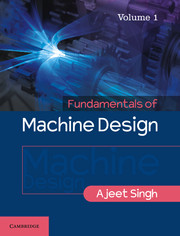17 - Eccentric Loading of Joints
Published online by Cambridge University Press: 17 July 2025
Summary
Eccentric Loading
If the axis of the load does not pass through the centroid of the fasteners, the joint is called eccentrically loaded (Figure 17.1). A riveted joint is shown in the figure, whose centroid is at C. A load P passes at a distance e from the centroid of the rivets. Eccentric load can be for any type of joint and each is described in the following sections.
There can be two types of eccentricities as shown in Figure 17.1:
a. Load is eccentric in plane of fasteners Figure 17.1(a). Plane of fasteners is shaded.
b. Load is eccentric parallel and offset to plane of fasteners. See Figure 17.1(b).
Eccentrically Loaded Riveted Joints
Eccentric loads are analysed by first considering the load at the rivet section causing primary shear. Then the bending moment or the torque caused by the eccentric load is superimposed on the primary shear as secondary shear or tensile, as the case may be.
Eccentricity in plane of rivets
When the load is in plane of rivets it causes bending moment, which causes the primary shear stress. Figure 17.2 shows a bracket riveted to a column using six rivets. A load P acts at a distance e from the centroid C of the rivets. The design procedure of eccentric load is as follows: Step 1 Calculate direct primary shear stress. First consider the load at rivets, assuming each rivet shares load equally. The direction of this primary force is taken same as the direction of the load.
Information
- Type
- Chapter
- Information
- Fundamentals of Machine Design , pp. 540 - 590Publisher: Cambridge University PressPrint publication year: 2017
